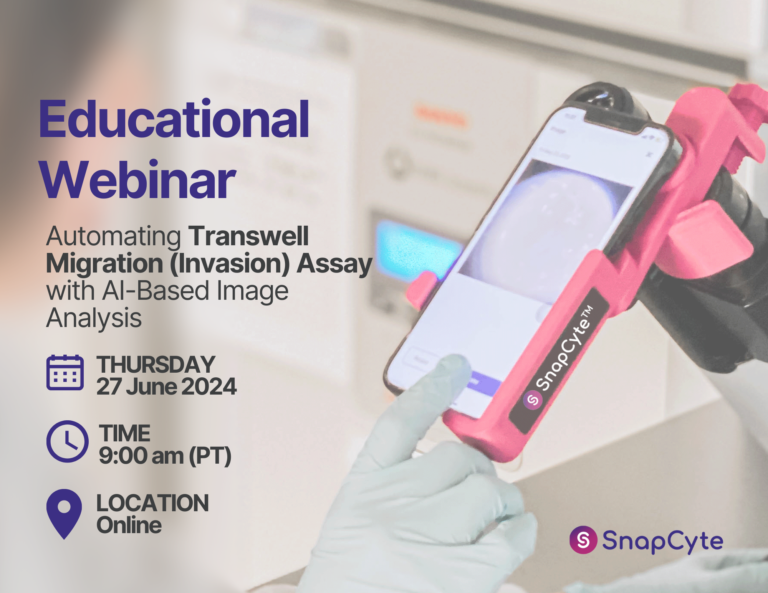Automating the analysis of transwell invasion assays with AI-based image analysis
The Vancouver Prostate Centre is a leading entity in prostate cancer research, committed to elucidating cancer progression’s mechanisms and pioneering therapeutic innovations. Dr. Syam Somasekharan is a prominent Senior Research Scientist at the Centre. He spearheads pivotal studies on RNA regulatory networks and focuses on stress adaptation- and treatment-resistance in prostate cancer.
Challenges in Invasion Assay Data Acquisition and Analysis
As part of their work on prostate cancer research, Dr. Somasekharan’s team often runs an invasion assay analysis. In their work on prostate cancer research, Dr. Somasekharan’s team faced challenges in capturing usable microscope images for analysis, documentation and publication purposes. Furthermore, while exploring how to analyze their experimental data, they found that image processing software required extensive time and training to use.
The team also evaluated traditional methods for measuring cell invasion based on reading the optical density of dissolved stains but were discouraged by several drawbacks. These included the time-consuming nature of traditional methods (~one hour per plate), the necessity for training and experience, the irreversible sample loss, and the inability to visually verify data.

Optimal Assay Analysis with SnapCyte™
Looking for alternatives, Dr. Somasekharan’s team decided to test the SnapCyte™ platform to acquire and analyze their samples. The SnapCyte™ phone adapter dramatically improved the clarity and quality of cell images taken under the microscope, a process that was streamlined to just 15 minutes.
Moreover, the advanced AI algorithm of SnapCyte™was able to accurately detect cells in the image after enhancing the staining contrast. The integration of SnapCyte™ into their workflow not only optimized their process but also ensured that the data collected was both reliable and accurate.
Key benefits to SnapCyte™:
- Accuracy in Invasion Area Measurements: SnapCyte’s AI-driven analysis provided the team with highly accurate data, essential for advancing their understanding of prostate cancer cell behaviors.
- Time Efficiency: The complete imaging and analysis process was reduced to under 30 minutes, significantly optimizing protocol efficiency.
- Environmental and Health Safety: SnapCyte™ eliminated the need for toxic dissolving agents and additional waste associated with other methodologies, offering a more sustainable solution.
Sign up for our upcoming Invasion Assay Webinar
Join us for a webinar where we discuss the challenges of current Transwell assay methods, tips for conducting robust assays, and how AI-based image analysis can provide consistent, reproducible results.









